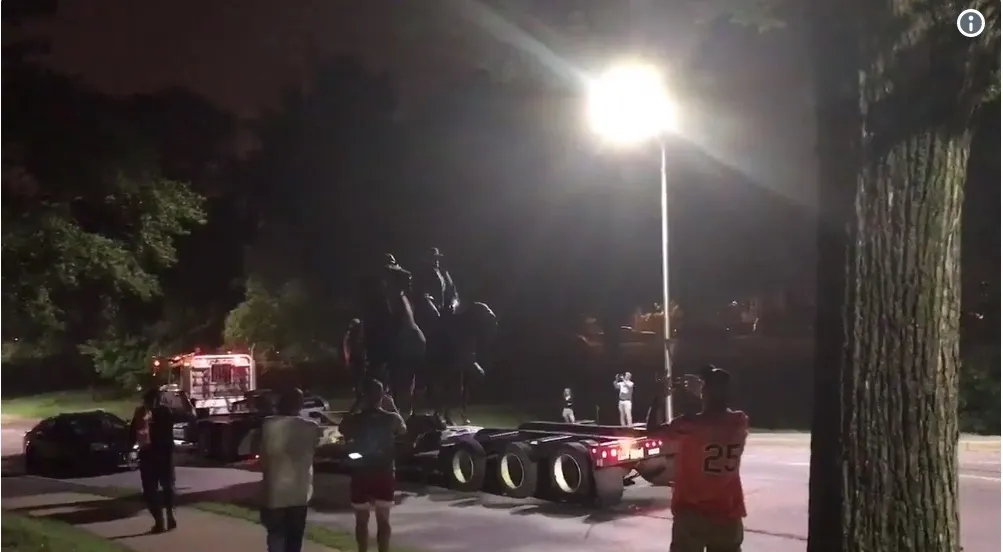On this morning, my city lurches forward in a way that only happens when the cost of inertia is made clear. Thank you, Heather Heyer. pic.twitter.com/ovEXdPB3O8
— David Simon (@AoDespair) August 16, 2017
Good riddance.
Four Confederate statues in Baltimore were removed overnight, which was the result of the city council voting for their removal. Baltimore mayor Catherine Pugh made an announcement, saying, “It’s done. They needed to come down. My concern is for the safety and security of our people. We moved as quickly as we could,” said Pugh to The Baltimore Sun.
And here it goes. pic.twitter.com/hIDAKpiFtH
— Baynard Woods (@baynardwoods) August 16, 2017
These included the Robert E. Lee and Thomas. J. “Stonewall” Jackson Monument in Wyman Dell Park, a monument commemorating Supreme Court Justice Roger B. Taney of the Dred Scott decision, the Confederate Soldiers and Sailors Monument on Mount Royal Avenue, and the Confederate Women’s Monument on West University Parkway.
Taney monument gone pic.twitter.com/wJFY53sPxj
— Baynard Woods (@baynardwoods) August 16, 2017
There’s no confirmation yet about where they would be taken or what might take the place of these monuments, but Pugh suggested that the city not completely write it out of existence. “I do believe that it is a part of our history,” she said, “and there should be something that says why that statue was once there, what it represented, and more importantly, why it should not be there.”
To make it clear, these statues are about historical revisionism, not historical preservation. The Lee and Jackson Monuments were dedicated in 1948. The fundraising for the Confederate Soldiers and Sailors Monument was led by Louise Wigfall Wright, the woman who founded the Maryland chapter of the United Daughters of the Confederacy, and erected in 1903. The Confederate Women’s Monument on West University Parkway was dedicated in 1917. These are modern symbols of the ways in which the Confederacy has been romanticized and constantly evoked in white supremacy.
Monuments and memorials are about the the relationship between the represented and the nation. Not only that, they express an image and idea of the nation itself with symbolic power. In “Traveling Corpses,” Lars Ove Trans says that bodies and death rites provide a “site for identification of symbolic, national boundaries” as well as a “social force that enchants politics and socialises religion.” I believe the same can be argued about the social function these Confederate symbols, and ones like it, serve. They provide an identification for the racist values of the Confederacy, as well as the violence it inflicted and fought for, and as a result have no place in a nation that values equality and education that truly reflects our country’s history.
Goodbye monuments, you will not be missed.
(via Buzzfeed, image: screencap)
Want more stories like this? Become a subscriber and support the site!
—The Mary Sue has a strict comment policy that forbids, but is not limited to, personal insults toward anyone, hate speech, and trolling.—









Published: Aug 16, 2017 12:41 pm